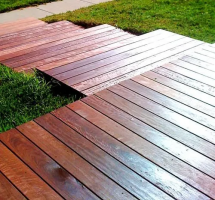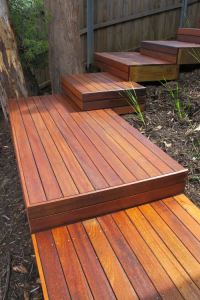Flights of stairways shall have handrails on each side and shall comply with
Section 1014.
FLIGHT. A continuous run of rectangular treads,winders or combination thereof from one landing to another.
Your four risers meet the definition of “flight” because it consists of multiple treads, therefore handrails on both sides are required.
In my opinion we are talking about a single riser is the only way that exception 2 applies.
I am of the same opinion, I think the intention is to refer to a single riser, as if the exception said: “…and walkways that have a single riser…”. We have miles of single-riser changes of elevation in pretty much every city in the country - curbs - yet we don’t have handrails lining the sides of streets. It’s even acceptable to ramp down a curb without a handrail when you have a curb ramp.
To add to the fun, the definition of “flight” is “a continuous run of rectangular treads [plural]” so someone could argue that to have a flight you need a riser+tread+riser+tread+riser so that you have more than one tread. So maybe Exception 2 could apply to two risers separated by a single tread?
If each landing is at least 36 inches then no handrail required
The spacing might have to be longer depending on the stairs, 1011.6 (Stairway Landings) requires the landing be the lesser of the width of the stairway or 48” in the direction of travel.
The IBC defines a stair as "a change in elevation, consisting of one or more risers." From that, it sounds like 4 risers would be a single change in elevation.
This is correct, but a single riser is also a change in elevation. A single riser is a change in elevation at the smallest level, requirements for this change in elevation are specified in 1011.5 (Stair Treads and Risers.) When you put multiple risers together (connected with appropriately sized treads) you get a change in elevation referred to as a “flight” with limits on that change in elevation in 1011.8 (Vertical Rise.)
I found the spacing to be very awkward as it made me alternate between 2 and 3 steps per riser.
I love the look of such cascading steps/platforms/whatever, but you’re right, the variation in stride is weird. What’s worse is when the spacing between the risers requires an adjustment in stride, such as 1.5 or 2.5 normal strides.


